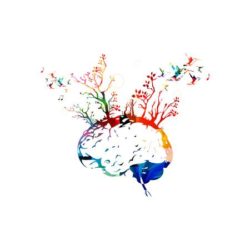Neuromyths are commonly held misbeliefs about the brain and its functions. As Christopher Berland mentions in his article, once individuals are exposed to an idea, it is challenging for them to distinguish between fact and fiction. A study conducted by researchers from various academic institutions in the United States found that neuromyths are not only popular amongst the general population, but surprisingly also among those who are knowledgeable of brain science as well. Findings of this study were collected through responses via an online survey on TestMyBrain.org, where participants answered a series of true-false questions. Five popular misconceptions found in the survey are listed below:
- Individuals are either “left-brained” or “right-brained”, which allow for different learning styles
While this idea may appear valid to many without a neuroscience background, there is not enough evidence to demonstrate any fundamental difference in learning-related activity in the two hemispheres. Based on current knowledge, both hemispheres contribute to learning.
- Brain development and growth is completed by the time of puberty
The brain continues to develop throughout adolescence and adulthood despite the fact that other areas of the body may stop developing; especially the frontal lobes, which play a key role in decision-making.
- Learning is a result of adding new cells to the brain
Though the brain is capable of growing new cells, the addition of new cells does not result in learning. In fact, learning occurs from changes in the connections between brain cells
- Mental capacity is hereditary and can’t be changed by environment or experience
Although genetics do play a role in our mental abilities, our environments and experiences also have a great impact on our overall development.
- During sleep, the brain stops functioning
Our brains are always active, even when we sleep! Although brain activity does slow down, the brain continues to work hard to maintain our bodily functions.
Overall, the study concluded that 68% of the public, 56% of educators and 46% of individuals trained in neuroscience believed the neuromyths. The findings suggest that while being educated on the subject helps reduce misconceptions, it does not completely remove them. Some future projects for the study’s research team include developing training tools to debunk neuromyths for people of various backgrounds.
Tags: brain, mythsCategorised in: Uncategorized
This post was written by Allison Wong
